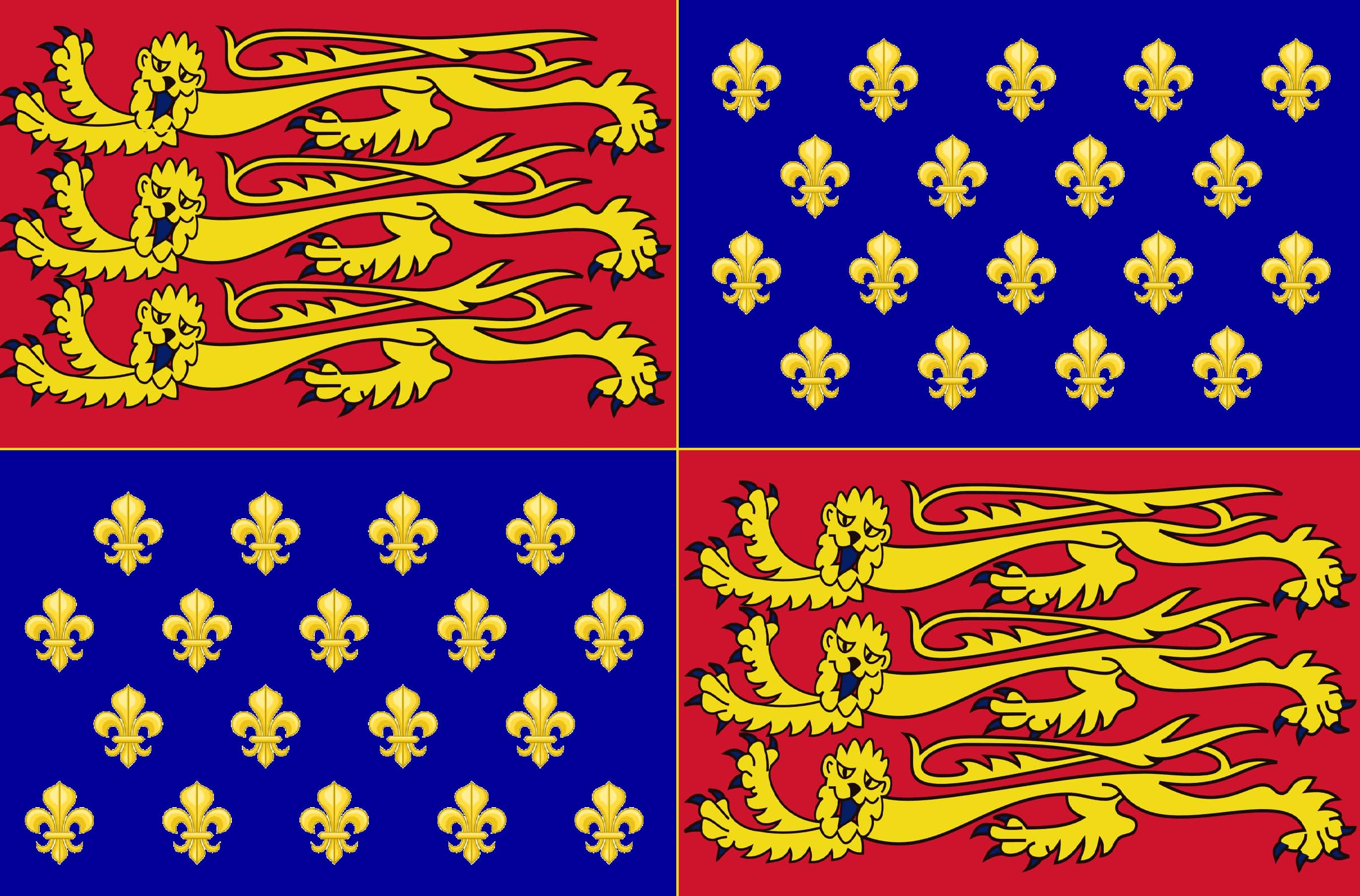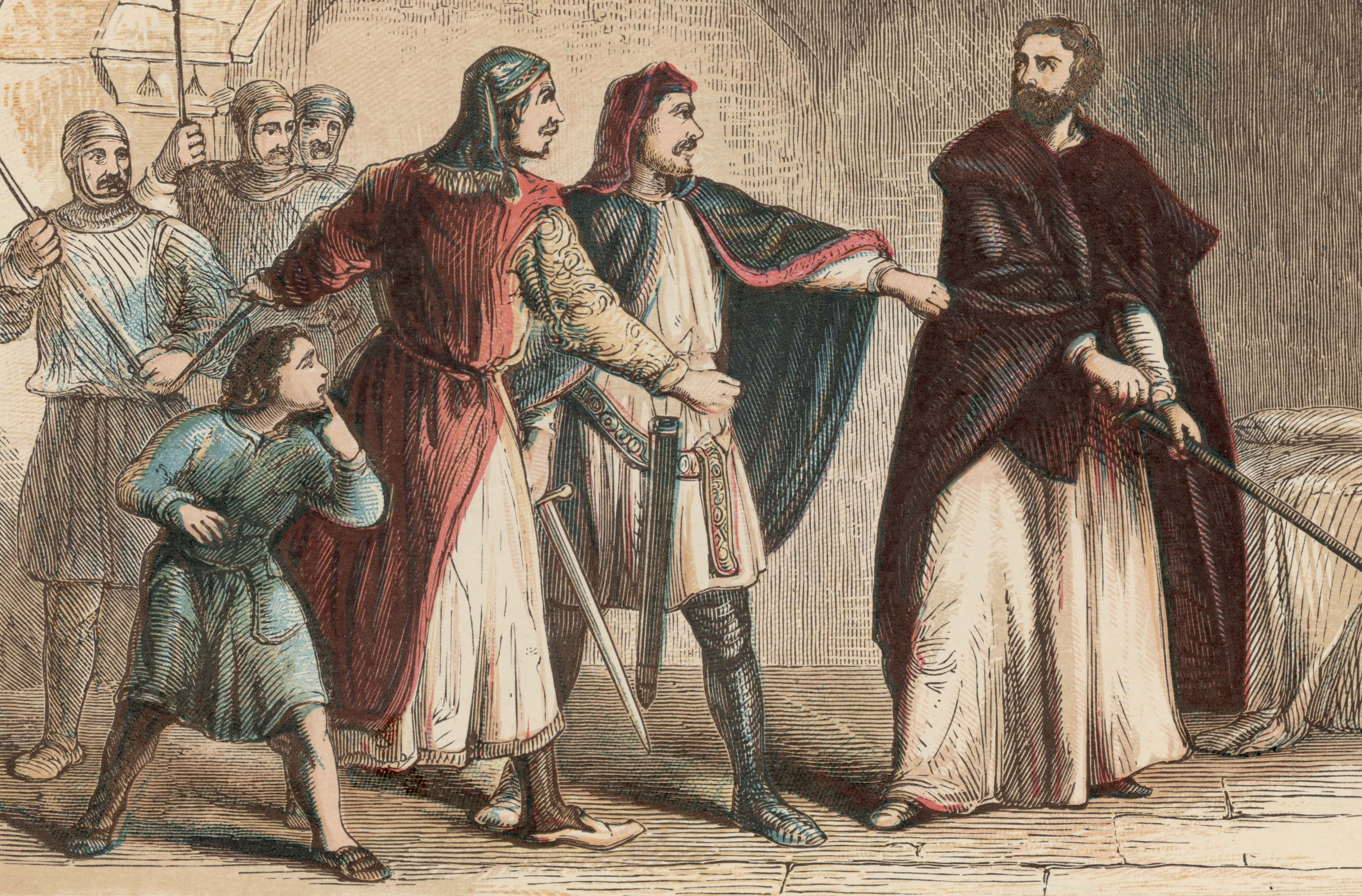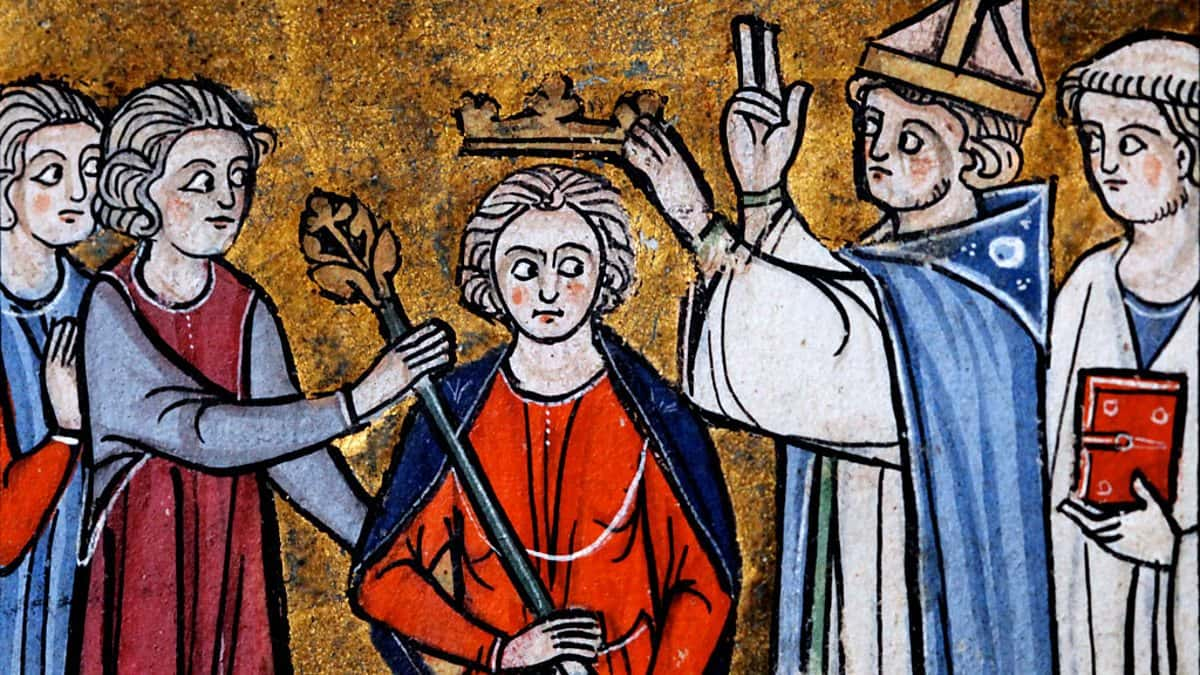“I am born in a rank which recognizes no superior but God, to whom alone I am responsible for my actions; but they are so pure and honorable that I voluntarily and cheerfully render an account of them to the whole world.” —Richard the Lionheart
“Something as curious as the monarchy won’t survive unless you take account of people’s attitudes. After all, if people don’t want it, they won’t have it.” —Prince Charles
Richard the Lionheart may have lived centuries ago, but his legend still goes on today. Like any teenager, he rebelled against his own father—who, may we add, was king at the time—with his brothers. Later, when Richard himself became king, he famously led the Crusades in hopes of winning Jerusalem for the Christians. This English king who barley spoke a word of the language also decided prior to his death that parts of him were to be buried in various places. Some loved him, some hated him, but he did hold the throne for nearly a decade. Take a look into his life.
King Richard Facts
25. So Many Titles, So Little Time
Richard I was born on September 8, 1157, and was known by quite a number of titles and names during his life. He’s most known today as Richard the Lionheart, but also would have answered to the French Richard, Coeur de Lion; Duke of Aquitaine starting in 1168; then of Poitiers four years later. Between 1189-1199 he was King of England, Duke of Normandy and Count of Anjou.
24. Forgive Me, Father
Richard was the spare’s spare, if you will. He was the third son born to his parents, Henry II and Eleanor of Aquitaine. Richard and his brothers weren't known for their great respect for dear old dad. They rebelled against their father in 1173 and 1174, when Richard was only about 16 or 17 years old. It didn’t really go all that great, and Richard gave in, with his father pardoning him for his actions. The father-son family drama wasn't over yet, though, and after further disagreements Richard would eventually ally with France to all but browbeat his father into naming him as heir to the throne of England, whereupon Henry II promptly died.
 Youtube
Youtube
Henry II
23. Do You Want a Piece of Me?
When Richard did pass, parts of his body went to different places. Gross, I know, but bear with me here. Richard was very specific about where certain parts were to go. His body, crown, and regalia were buried alongside his father in the royal abbey of Fontevraud, while his embalmed heart went to Rouen cathedral because of his profound love for Normandy. But there’s more: his entrails were also sent to the region of Limousin to be buried.
22. Richard Saves the Day!
If you’re a fan of Robin Hood, you’ll likely know that Richard is often depicted in the films. He shows up toward the end, garnering the character the nickname of “Richard of the Last Reel.” He’s always depicted as being triumphant and heroic as he comes to punish the bad guys, namely Prince John and the Nottingham Sheriff.
21. All in the Family
You might be wondering if he has any relation to the current British monarchy. Well, he does! He is the 21st great-granduncle of Queen Elizabeth II. That gives just a bit more perspective to how long ago he reigned, doesn’t it?

20. The Lion Lives on
Those three lions that help identify England even now on things like national sports jerseys and coins can be traced back to Richard. His original Great Seal from 1189 only had one or two lions, but when the second Great Seal came out, there were three. It would be known as the Royal arms of England.

19. Lord of the Kitchen
Richard once knighted his cook. In that time period, cooks were pretty important simply because one wrong move could mean killing those eating the meal. Don’t forget, hygiene wasn’t really a thing then. After one meal in particular, Richard was in such a good mood that he suddenly knighted his cook, giving him the title of “lord of the fief of the kitchen of the counts of Poitou.”
18. Just Give Him a Hat and Sunglasses
After the Crusades, Richard's Christian allies were actually pretty peeved at him, and he couldn't even return to his kingdom out in the open. He was caught trying to sneak past the Duke of Austria's borders in disguise (he hadn't made a friend in the Duke either) and was handed over to the German emperor. Historians even argue that Richard's ensuing reputation as "Good King Richard" was actually just a spin campaign run by his mom Eleanor to get her beloved son out of this patch of trouble in Austria.
17. A Stately Statue
There’s a huge bronze statue of Richard in the yard of Westminster Palace. This statue depicts a very muscular Richard sitting atop a horse, complete with a crown on his head, wearing full armor while he raises his sword in victory. Classic Richard.

16. Spiralling out of Control
Richard’s coronation was held at Westminster Abbey on September 3, 1189. He banned all women and Jewish people from attending the ceremony, and things started to go south from there. His edict incited anti-Semitic violence and created a social uproar. It got so far out of hand, people even began claiming that Richard ordered all Jews to be killed, and the populace reacted with rioting, burning Jewish homes and assaulting Jewish people. For his part, Richard punished those responsible for the violence—but likely for self-serving reasons. After all, he was about to embark on his Crusade, and didn't want to leave his country in tatters.
15. What Does a King Look Like?
Rumor has it that Richard was a large man, standing around six feet five inches. He was also said to be attractive, with reddish-blond hair, light eyes and pale skin. Of course, we can only guess at his stature, as his remains have long since been lost, roughly around the time of the French Revolution.
14. V for Vendetta
After gaining the throne in September, 1189, Richard didn’t think about his country’s future. No, he was more interested in leading the crusades against Saladin, who had captured Jerusalem. Philip II of France, though previously an ally, wasn't really interested in eternal war, so Richard broke away from him. The new English King went deep into the coffers to pay for his army, but eventually a reluctant Philip did join in the crusades and help out.
13. Try, Try Again
The first two times Richard tried getting at Jerusalem, he and his troops made it within just miles of its walls before failing. But by then, everything was falling apart. There was infighting, Richard and Philip had yet another spat, and the English king began making enemies left, right, and center.
12. Let’s Make a Deal
After seemingly getting on all his allies’ nerves, Richard managed to strike a deal with Saladin, which was only to last for a period of three years. The deal would allow those taking part in the Crusades to have some of the land they currently occupied along with another thin section of land along the coast. What’s more, Richard got Saladin to allow Christian pilgrims the ability to go to holy areas with no worry.
11. Rebel, Rebel, Toil and Trouble
Richard may not have been the most loyal son or the most fiscally responsible king, but he was undeniably a military genius. His victory at the Battle of Arsuf during the Crusades is legendary, and his reign saw him easily batting back surges of rebel forces.
 Youtube
Youtube
10. Long-Since Levelled
The King's Houses, the palace Richard was born in, no longer stands, but its importance in history still remains. There’s a commemorative plaque near where the palace once stood proud, detailing that Richard (and perhaps even his brother John) was born there. Henry I, Richard’s great-grandfather, built the King’s Houses where he did because it was a close enough ride from there to his hunting tower.
9. Just Can’t Please Everybody
Richard’s sister, Joan, was once taken prisoner in Sicily. Richard had to sign the Treaty of Messina to help secure her release. In doing so, Richard had to give some concessions of his own. Most importantly, he had to acknowledge that Tancred of Lecce was the Sicilian king. For various political reasons, this royally pissed off not only the Germans, but also Richard's brother John.

8. Here Comes the Groom
Richard married Berengaria of Navarre on May 12, 1191 while in Cyprus. She is now known as "the only English queen never to set foot in the country," though there is some evidence that she did in fact go to England after Richard's death.
7. Mama's Boy
When Richard rebelled against his father as a teen, Henry II punished his young son in a brutal manner. Henry II had his own wife (and Richard's mother) Eleanor imprisoned. There were rumors that Eleanor had even encouraged her sons to rebel against their head of household, so her imprisonment may have been her own comeuppance. However, Richard was a bit of a mama's boy, and she was also used as insurance and leverage to make sure Richard kept himself in line. She remained imprisoned until her husband's death.
 Civilization V Customisation Wikia
Civilization V Customisation Wikia
6. No Heir, No Spare
Richard never even bore an heir to his throne. Despite the fact that he married Berengaria of Navarre, he never had legitimate children to carry on his line. Apparently, he generally had a disinterest in women. This, combined with some of his confessions, have lead some historians to suggest Richard had homosexual or bisexual desires. During his coronation, his dear mother Eleanor, likely the only woman he truly respected, stood in for the role of his queen.
5. Baby Betrothal
Richard had actually been betrothed to another woman when he was only nine years old. His father managed to trick the French King into giving his daughter Alais as Richard’s intended. It would never come to be, though. Henry essentially just kept Princess Alais as a prisoner for 25 years, even going so far as to use her as his own mistress. As per his wife Eleanor, Henry II's solution to pretty much everything seems to have been "imprison more women."

4. Speaking a Foreign Tongue
Richard probably didn’t even speak English. Yes, he was the king of England and didn’t even speak their language. He actually didn’t spend a lot of time in the country, perhaps only about six months during his entire reign.
3. The King Is Dead
Richard, at only 41 years old, died after a crossbow bolt snagged his left shoulder in 1199 during a castle siege. Once the bolt was ripped out, the wound quickly became infected. He died just two days later—but his beloved Eleanor was able to make it to the site to see him before he ultimately passed. He died in her arms.
 Youtube
Youtube
2. One Can Forget, if the Dead Do the Forgiving
Before his death, Richard summoned the man who had shot him; he turned out to be a mere boy. When asked why he had shot the King of England, this mere boy spat out that Richard had killed his father and brothers, and he was seeking his revenge. He thought he was facing certain execution, but Richard's final words to him were an act of mercy. "Live on, and by my bounty behold the light of day," the King said, forgiving the boy and sending him away with 100 shillings. Tragically, Richard's royal pardon may have been immediately betrayed: one source reports that a vicious captain named Mercadier went against the King's wishes, flaying the boy alive and hanging him in revenge.
1. The Price Is Right
In 2018, the chateau in France where Richard died was put on the market. Located just over 100 miles northeast of Bordeaux, Châlus-Chabrol can be yours for €996,400, which equals just over $1,100,000 American. Quite frankly, that’s a bit of a steal if you ask me! It boasts 15 rooms and incredible views of the surrounding region.



























